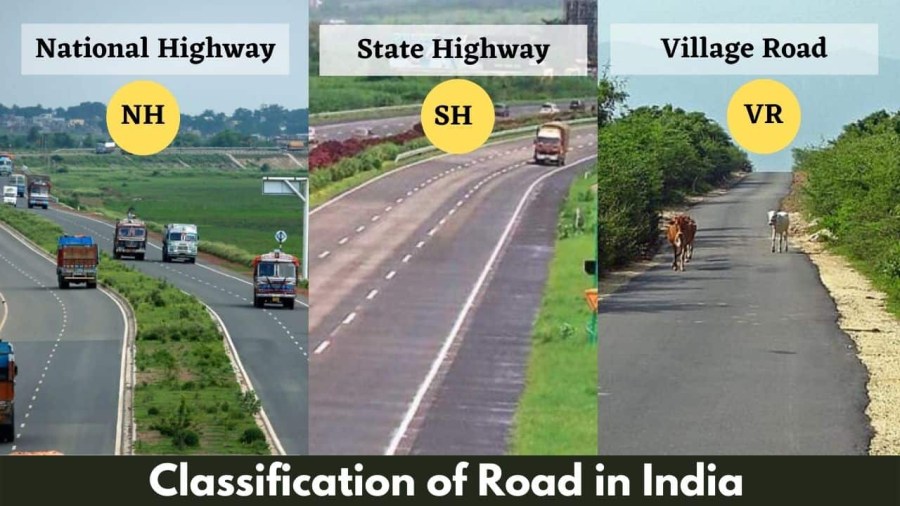
Based on Seasons of the year:
- All-weather roads: These are roads that can be operated in all weather conditions, with the exception of large river crossings, when traffic disruption is permitted to a certain level.
- Fair-weather roads: These are routes where traffic may be disrupted during the monsoon season due to overflowing streams at causeways.
Based on type of carriage way:
- Paved Roads: have a solid pavement surface of at least WBM layers
- Unpaved Roads: do not have a hard pavement layer. Unpaved roads include dirt and gravel roads.
Based on type of pavement surface:
- Surface Roads: provided with a bituminous or cement concrete surfacing.
- Un Surfaced Roads: not provided with bitumen or cement concrete surfacing.
Based on traffic volume:
- Light: Roads with a low flow of vehicles. ODR roads are an example of a village.
- Medium: Roads with a higher traffic density relative to ODR.
- Heavier: Roads with a large volume of traffic. (NH, SH)
Based on Load transported or tonnage:
- Class A or Class I vehicles are those that carry less than ten tonnes of cargo on the road.
- Class B or Class II: Highways with heavier loads (LCV, Medium Commercial Vehicles).
- Class C or Class III: Roads where heavy-tonne-load trucks are permitted.
Based on Location and function:
- National Highways (NH): These are the primary roadways that run the length and width of India, connecting important ports, foreign highways, capitals of large states, and large industrial and tourist centres, as well as roads necessary for India’s security. NH-1, for example, connects Delhi, Ambala, and Amritsar. NH-1-A: From Jalandhar to Srinagar and Uri, NH-1 splits.
- State Highway (SH): These are a state’s arterial roadways that connect to adjacent state’s national highways, district headquarters, and major cities within the state, and serve as the principal arteries for traffic to and from district roads. SH17, for example, connects Bangalore with Mysore.
- Major District Roads (MDR): MDRs are roads within a district that serve production and market areas and connect them to one another or to the district’s main highways.
- Other District Roadways: These are the roads that connect rural production areas to market centres, taluk headquarters, block development headquarters, and other major thoroughfares.
- Village Roads (VR): These are the roads connecting villages or groups of villages with each other to the nearest road of a higher category.
